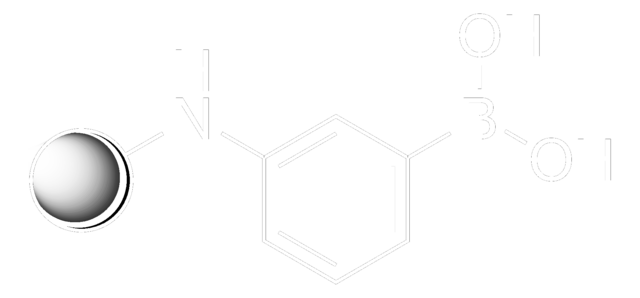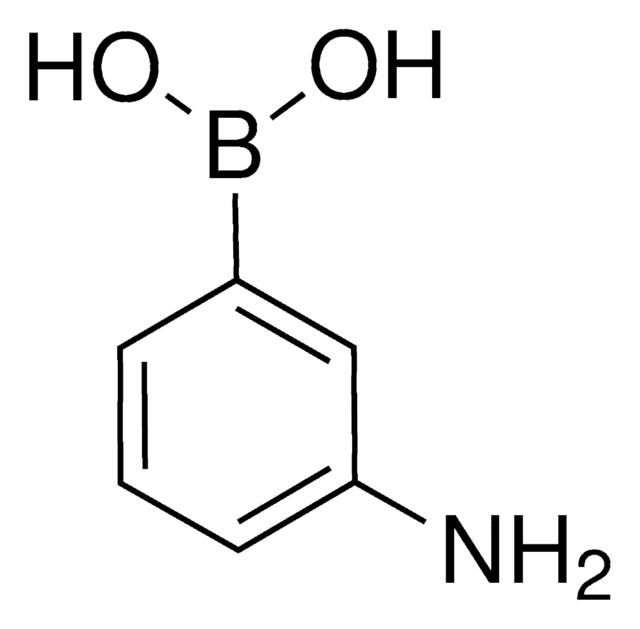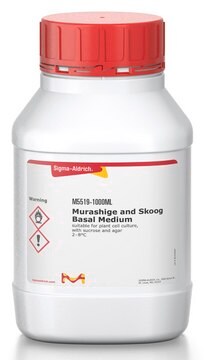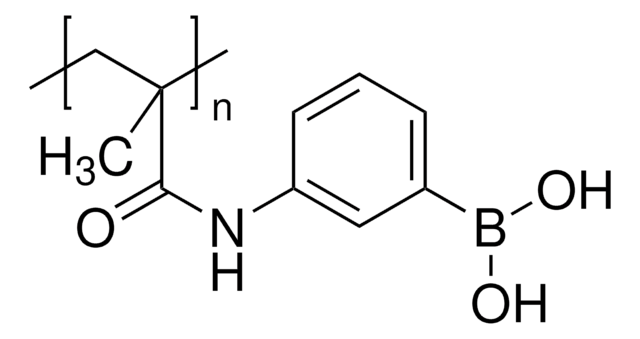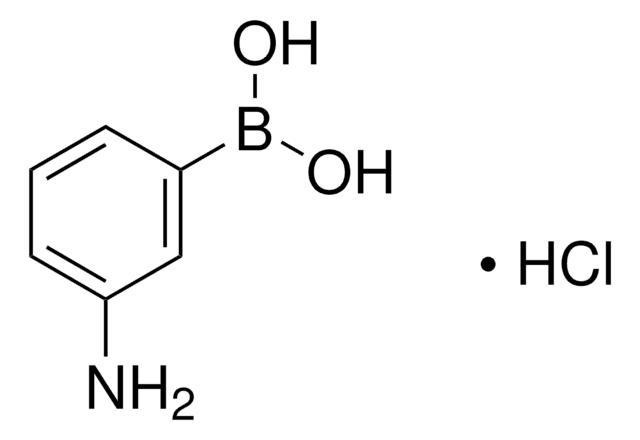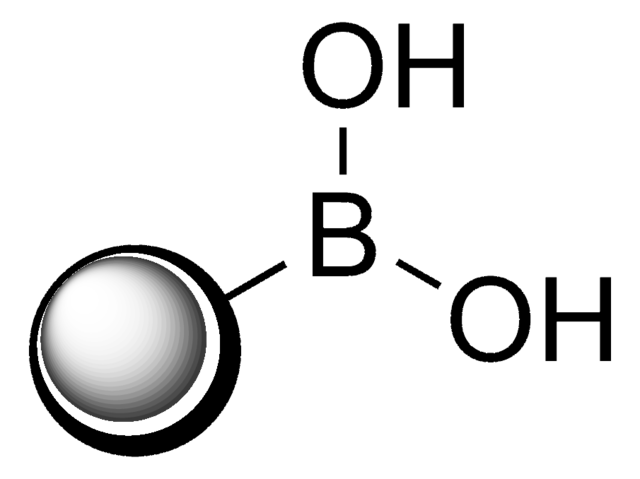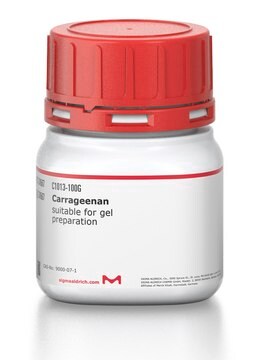A8530
m-Aminophenylboronic acid–Agarose
saline suspension
Sign Into View Organizational & Contract Pricing
All Photos(1)
About This Item
Recommended Products
form
saline suspension
Quality Level
extent of labeling
5-20 μmol per mL
matrix
cross-linked 6% beaded agarose
matrix activation
epoxy
matrix attachment
amino
matrix spacer
12 atoms
storage temp.
2-8°C
Looking for similar products? Visit Product Comparison Guide
General description
m-Aminophenylboronic acid–Agarose is applicable as a boronate affinity matrix for the purification of severe acute respiratory syndrome′s (SARS-CoV) nucleoprotein (NP) antigen.
Application
m-Aminophenylboronic acid–Agarose has been used as a separating gel in the boronate affinity chromatography of albumins. It has also been used as a resin for purification of 3,4-dihydroxyphenylacetaldehyde (DOPAL)-bound α-synuclein (α-syn).
Physical form
Suspension in 0.5 M NaCl, 0.1 M sodium acetate, pH 5.0.
Storage Class Code
10 - Combustible liquids
WGK
WGK 3
Flash Point(F)
Not applicable
Flash Point(C)
Not applicable
Choose from one of the most recent versions:
Already Own This Product?
Find documentation for the products that you have recently purchased in the Document Library.
N Plotegher et al.
Scientific reports, 7, 40699-40699 (2017-01-14)
Parkinson's disease is a neurodegenerative disorder characterized by the death of dopaminergic neurons and by accumulation of alpha-synuclein (aS) aggregates in the surviving neurons. The dopamine catabolite 3,4-dihydroxyphenylacetaldehyde (DOPAL) is a highly reactive and toxic molecule that leads to aS
Francesco Longo et al.
Acta neuropathologica communications, 5(1), 22-22 (2017-03-16)
Mutations in the leucine-rich repeat kinase 2 (LRRK2) gene are the most common genetic cause of Parkinson's disease. Here, we investigated whether the G2019S LRRK2 mutation causes morphological and/or functional changes at nigro-striatal dopamine neurons. Density of striatal dopaminergic terminals
Orazio Angelo Arcidiacono et al.
International journal of molecular sciences, 21(21) (2020-11-05)
It has become evident that epitranscriptome events, mediated by specific enzymes, regulate gene expression and, subsequently, cell differentiation processes. We show that methyltransferase-like proteins METTL3/METTL14 and N6-adenosine methylation (m6A) in RNAs are homogeneously distributed in embryonic hearts, and histone deacetylase
Our team of scientists has experience in all areas of research including Life Science, Material Science, Chemical Synthesis, Chromatography, Analytical and many others.
Contact Technical Service